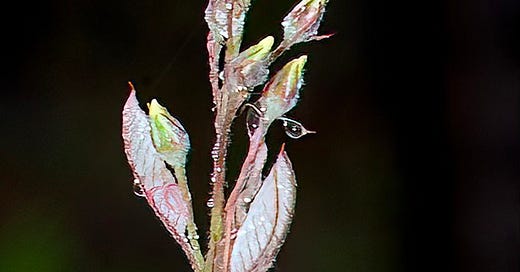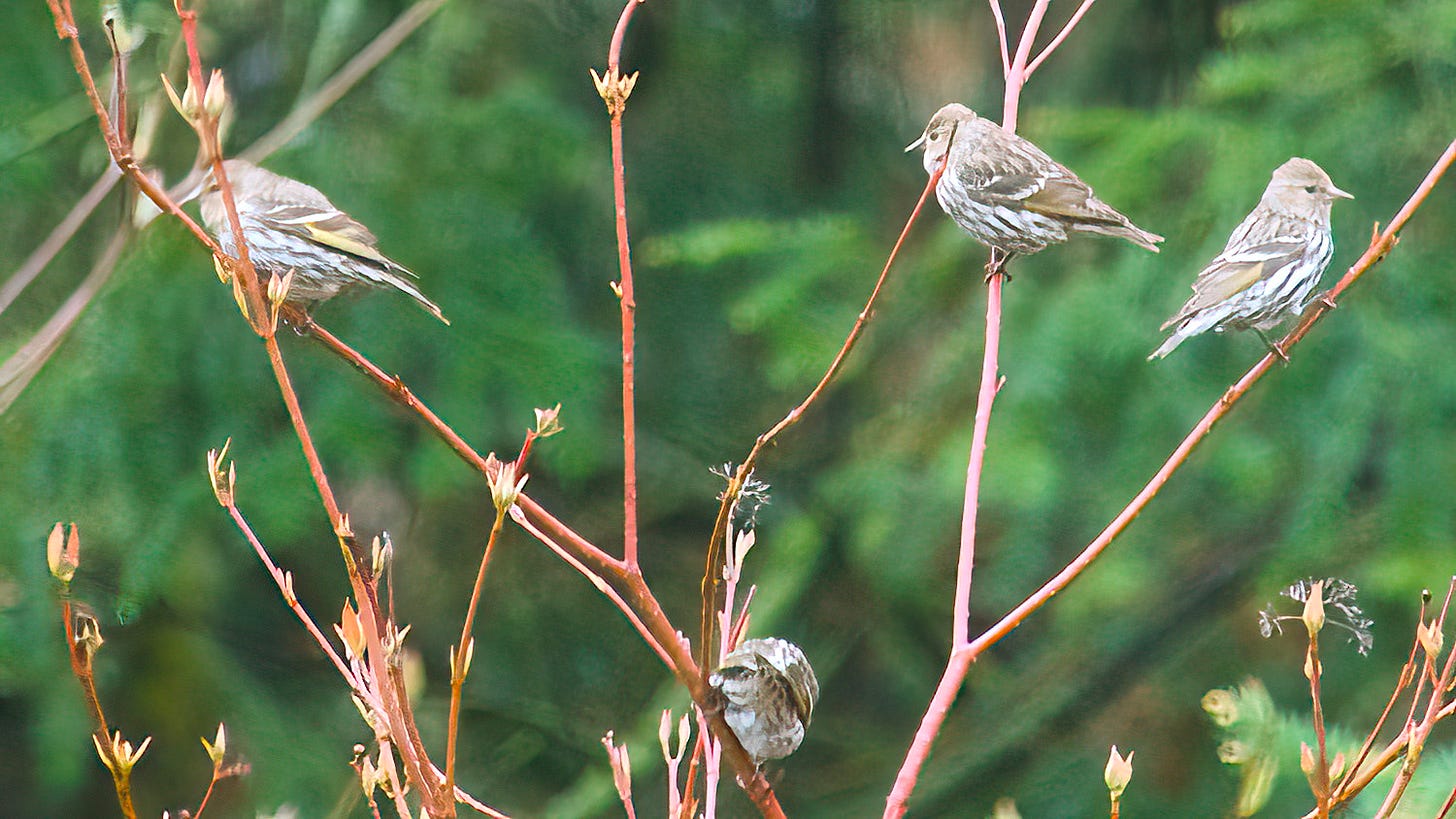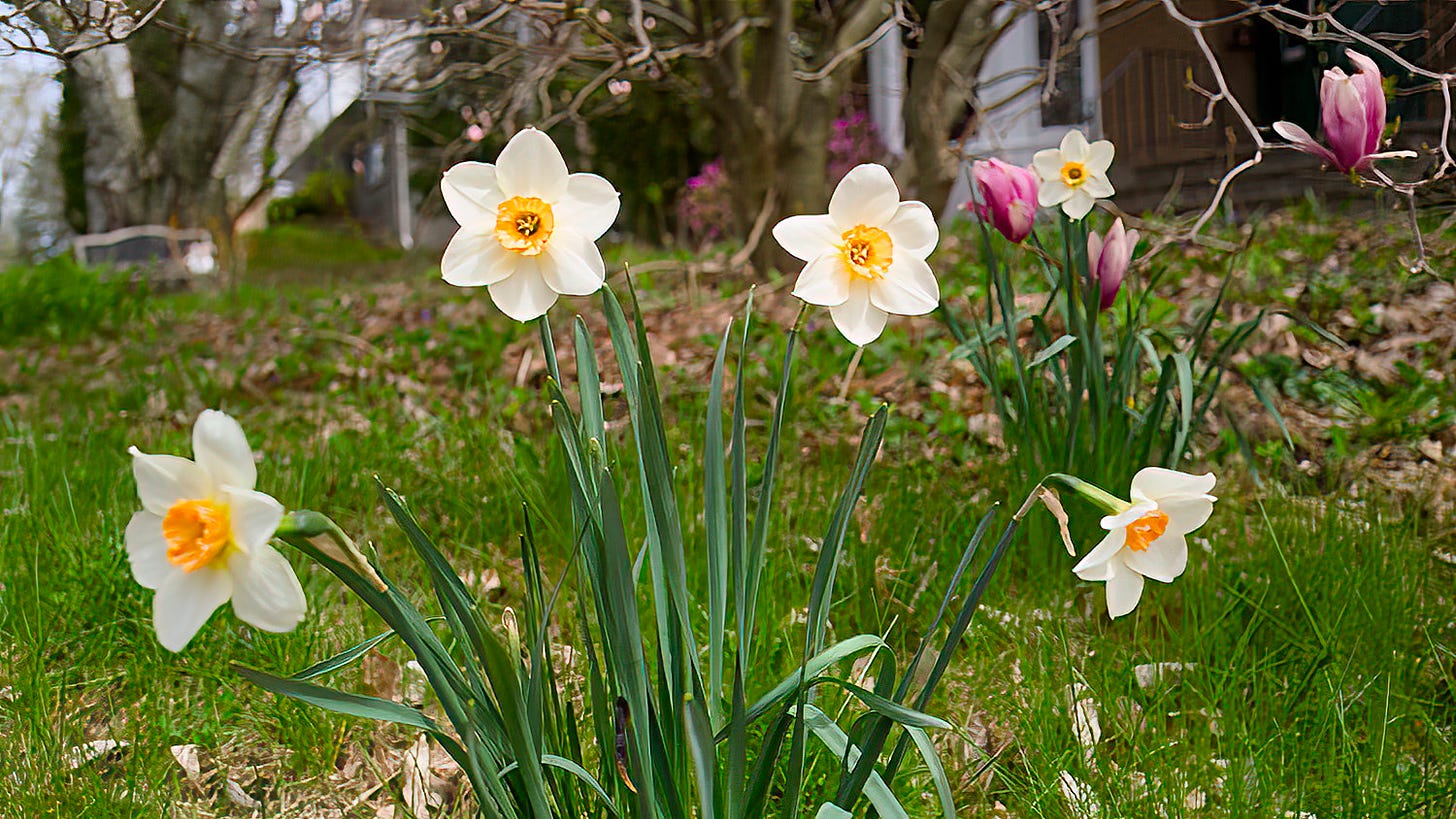Spring is Springing
… and there is another seasonal photo to end this post …
Feederwatch 2023-24
Last weekend was the final two day count period for the annual six month Feederwatch2023-24 season. It has been the 21st successive year in which we have participated - actually the 23rd but we had to redefine our site 21 years ago and the people in charge have yet to find a way to merge them despite the geographic location being identical. From November to the end of April, we recorded the presence of some 30 different species of birds in the vicinity of our garden feeders. I am not going to clutter the page with a long list of those species which would only be of interest to other bird-nerds, but if you want to know, then feel free to email me.
Over those 21 years, at some time or another, we have recorded 54 winter birds species visiting our suburban corner. In point of fact we have seen more species than that in 21 winters, but Feederwatch has a strict recording protocol and birds that don’t arrive on a count day cannot be included. Looking back at our records, there is one species of bird that has never failed to turn up to be recorded in every week of each of those 21 years. Guess what? The reliable Downy Woodpecker. Every week, always present and reporting for duty. Northern Cardinals and White-breasted Nuthatches have been almost as faithful, followed by Dark-eyed Juncos and latterly House Finches, which in the past three or four years have leapt from a 45% attendance rate to 96% this winter. Our favourite Carolina Wrens have been with us almost every week this winter - it used to be once or twice a season if we were lucky - only wandering off to pastures new since early April as the weather changed.
What is Feederwatch? Learn all about it here: https://feederwatch.org/
In essence it is a November-April survey of birds that visit backyards, nature centres, community areas, and other locales in North America. It is a unique monitoring tool for more than 100 bird species that winter in North America. What sets FeederWatch apart from other monitoring programs is the detailed picture that FeederWatch data provide about weekly changes in bird distribution and abundance across the United States and Canada. Importantly, FeederWatch data tell us where birds are, as well as where they are not. This crucial information enables scientists to piece together accurate population maps. Because FeederWatchers count the number of individuals of each species they see several times throughout the winter, FeederWatch data are extremely powerful for detecting and explaining gradual changes in the wintering ranges of many species. In short, FeederWatch data are important because they provide information about bird population biology that cannot be detected by any other available method.
Many people are surprised by the number of species of birds to be seen in the Montreal area during the very cold months of winter, forgetting that not all birds by any means migrate southwards at the end of fall … and those that stay are augmented by northerly species such Juncos and winter finches that come south to us, thinking that a Montreal winter is comfortable compared to what they have left behind in the far north. The results of the annual Christmas Bird Count usually come in around the 80-species mark that are sticking around. Birds are tough.
”Well, blow me dahn wiv a fevver!"
Not seen here since February 2022 despite being looked for every day of winter ... a small group of PINE SISKINS moved through the garden dogwood. Earlier in the week. The first of the true Winter Finches to visit for a couple of years … you can never guarantee them in any given season but it’s nice to know they have remembered us.
“On this page there is a heart, and another button lets you leave a comment should you wish - clicking either one apparently helps others discover my newsletter and, incidentally, it will also make me smile. Always a good thing”
Nature Book Launch
One thing that Feederwatch (and other citizen science projects) does is to help us to notice the natural world around us. In Britain there is a nature writer (she has several books and pens a regular column in The Times newspaper - very readable) by name of Melissa Harrison who has just announced the not too far distant publication of her new book called Homecoming: A Guided Journal to Lead You Back to Nature. No longer being a Euro-Resident it isn’t going to be much practical use to me, though I will probably pick up a copy, but it seems to me that it would be such a treat to have something along these lines in eastern Canada. If you are reading this in Britain why not pre-order a copy for yourself, or as a gift?
Quote: A year-long course in noticing, you can begin in any month and carry on round to the start, and as the days and weeks pass I’ll help you to discover and note down the best things you experience in nature each day. I’ll encourage you to spot species, learn to recognise birdsong, experience inspiring natural phenomena, mark the changing seasons and join in with citizen science projects, all the while building a new habit of noticing: one that I truly believe has the power to change your life.
Native Plant Spring Gardening
Now that it is finally early May, let’s spend some time musing on the wildlife gardening season ahead.
When I was a newcomer to Montreal and had the honeymoon excitement of my first “real” winter behind me (1998/9) I have to confess that I started asking people when I might expect summer to arrive. They laughed, snow in April is not unknown - but then most told me to wait for the first week of May when suddenly all the trees would start budding their leaves … and blow me down, they were right. Something I may never come to terms with, after 50 years living in England, is how quickly one season here rolls over into another. It’s like someone flicks a switch to put the lights on - snap and suddenly summer is happening without any of that will it/won’t it/are we there yet wondering of a drawn-out Northern European seasonal transition. This week, the leaves are appearing all at once and a certain aura of greeness is making us aware of its presence. Overnight on Tuesday the maple flower buds popped open and all the native plants that will eventually be as high as an elephant’s eye made their presence felt - albeit at the two inch high level for now.
I will have more to say in the weeks to come.
Finally - I so much agree with this …
Pretty much every single word, in fact.










Interesting to learn about Feederwatch. Another great example of the contribution of citizen scientists. I take part in a regular butterfly survey over the summer months and I always look forward to the start of butterfly season.
beautiful photo of grosbeak and I am really jealous about the siskins. Please send me the list of all the FeederWatch species!